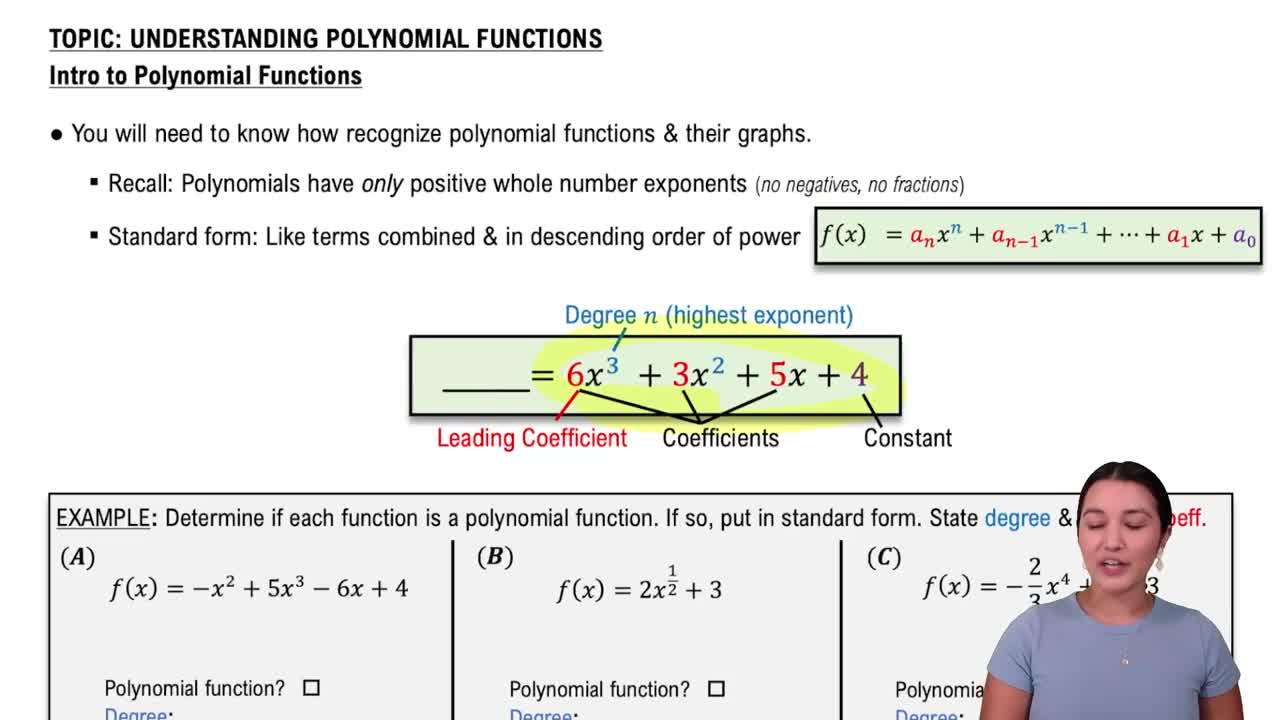Here are the essential concepts you must grasp in order to answer the question correctly.
Domain of a Function
The domain of a function refers to the set of all possible input values (x-values) for which the function is defined. For polynomial functions like f(x) = 3(x - 4), the domain typically includes all real numbers, as there are no restrictions such as division by zero or square roots of negative numbers.
Recommended video:
Domain Restrictions of Composed Functions
Polynomial Functions
A polynomial function is a mathematical expression involving a sum of powers in one or more variables multiplied by coefficients. The function f(x) = 3(x - 4) is a linear polynomial, which is a specific type of polynomial of degree one. Polynomial functions are continuous and defined for all real numbers.
Recommended video:
Introduction to Polynomial Functions
Graphing Linear Functions
Graphing linear functions involves plotting points that satisfy the function's equation and connecting them to form a straight line. The function f(x) = 3(x - 4) can be rewritten in slope-intercept form as f(x) = 3x - 12, indicating a slope of 3 and a y-intercept of -12. Understanding the graph helps visualize the domain and behavior of the function.
Recommended video:
Graphs of Logarithmic Functions



